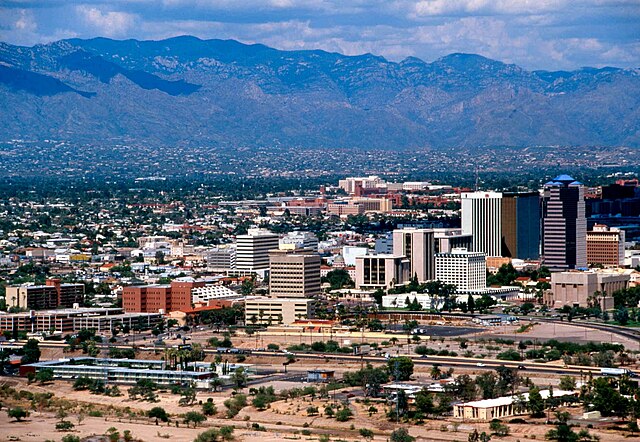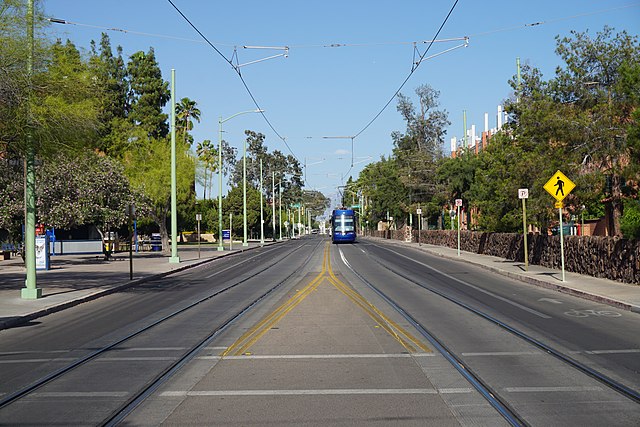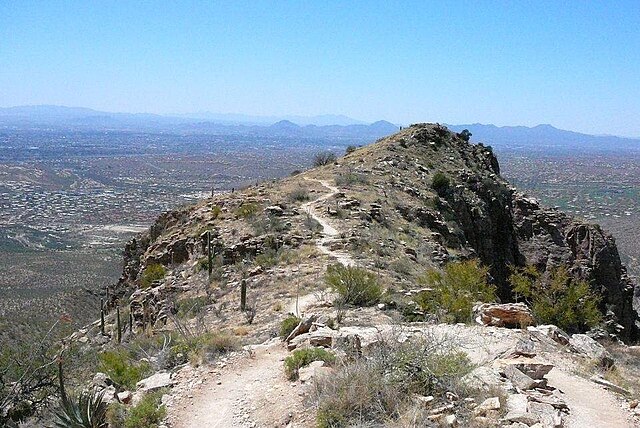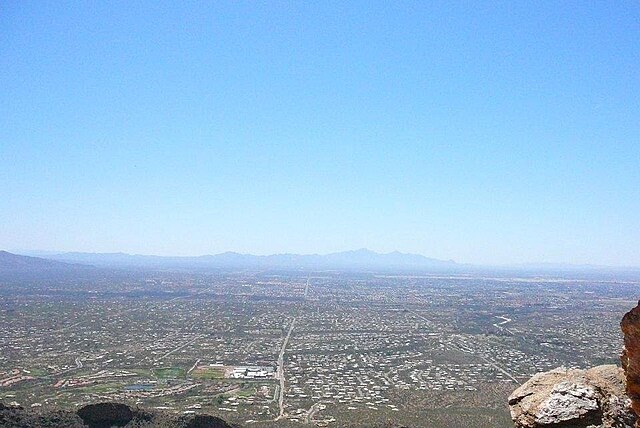Have you ever wondered what it’s really like living in one of America’s most distinctive desert climates? Tucson, Arizona, offers a fascinating weather story that goes far beyond the simple “hot and dry” stereotype. This comprehensive guide will walk you through everything you need to know about Tucson’s weather patterns, helping you understand, prepare for, and even embrace this unique desert environment.
Understanding Tucson’s Desert Climate
What Makes Tucson’s Weather Unique?
Tucson sits in the heart of the Sonoran Desert at an elevation of 2,389 feet above sea level. This positioning creates a climate that’s both predictable and surprising. Unlike other desert cities, Tucson experiences what meteorologists call a “desert climate with monsoon characteristics” – think of it as nature’s way of adding a plot twist to an otherwise straightforward weather story.
The city enjoys over 350 days of sunshine annually, making it one of the sunniest places in the United States. But here’s where it gets interesting: Tucson actually has two distinct rainy seasons, something that catches many newcomers off guard. This bi-modal precipitation pattern sets Tucson apart from typical desert locations.
The Sonoran Desert Influence
The Sonoran Desert doesn’t just provide a backdrop for Tucson – it actively shapes the city’s weather patterns. This desert ecosystem creates what scientists call a “heat island effect” during summer months, where urban areas become significantly warmer than surrounding natural desert areas. It’s like the city becomes a giant outdoor oven, absorbing and radiating heat throughout the day and well into the night.
The desert’s influence also means dramatic temperature swings. While summer days might soar above 110°F, desert nights can cool down by 30-40 degrees. This daily temperature variation is one of the desert’s most defining characteristics and something residents learn to appreciate and plan around.
Tucson Weather by Season

Spring Weather in Tucson (March-May)
Spring in Tucson is like nature’s perfect rehearsal for the year ahead. The season brings some of the most comfortable weather you’ll find anywhere in North America.
Temperature Patterns
March typically sees daytime highs in the mid-70s to low 80s°F, with nighttime lows in the 50s. By May, you’re looking at highs in the low 90s and lows in the mid-60s. The temperature progression is remarkably consistent – you can almost set your calendar by it.
What makes spring special isn’t just the comfortable temperatures; it’s the stability. You won’t find those dramatic weather swings common in other parts of the country. Rain is minimal during this period, typically less than an inch per month, making it ideal for outdoor activities.
Rainfall and Wind
Spring brings Tucson’s “dry season,” but that doesn’t mean completely rain-free. Occasional Pacific storms can sweep through, bringing brief but refreshing showers. These storms often come with spectacular cloud formations that paint the desert sky in ways that would make any photographer weep with joy.
Wind patterns during spring are generally mild, with breezes typically coming from the west and southwest. These gentle winds help moderate temperatures and carry away the urban heat, creating those perfect “chamber of commerce” days that Tucson is famous for.
Summer Weather in Tucson (June-August)
Summer in Tucson is intense – there’s no sugar-coating it. But understanding the patterns can help you not just survive but actually enjoy this season.
The Monsoon Season
Here’s where Tucson’s weather gets truly dramatic. The North American Monsoon typically begins in early July and runs through September. It’s like Mother Nature decides to throw a spectacular light show complete with torrential downpours, lightning displays that could power small cities, and temperature drops that provide blessed relief from the heat.
During monsoon season, afternoon and evening thunderstorms become common. These aren’t gentle spring showers – we’re talking about intense, sometimes violent storms that can dump an inch or more of rain in just an hour. The smell of rain on hot desert pavement, called “petrichor,” becomes a regular and welcome aromatherapy session.
Extreme Heat Management
June is typically the hottest month, with average highs reaching 104°F and occasional spikes above 115°F. The heat is dry, which makes it more bearable than humid heat, but it’s still serious business. Think of it like living inside a convection oven – manageable if you respect it and plan accordingly.
The key to summer survival is understanding that life shifts to early morning and evening hours. Many residents adopt a schedule that would seem bizarre to outsiders: up before sunrise, indoor activities during midday, and outdoor life resuming after sunset.
Fall Weather in Tucson (September-November)
If spring is nature’s rehearsal, fall is the main performance. Many longtime Tucsonans consider this the absolute best time of year.
Perfect Weather Months
October and November offer what many consider perfect weather. Daytime highs range from the mid-80s to low 90s in October, dropping to the 70s and 80s in November. Nighttime temperatures become genuinely comfortable, often in the 50s and 60s.
The monsoon typically ends by late September, ushering in crystal-clear skies and low humidity. It’s during this time that you understand why people move to the desert. The air is crisp, the sunsets are spectacular, and you can spend entire days outdoors without wilting.
Winter Weather in Tucson (December-February)
Winter in Tucson might be the most misunderstood season by outsiders. While the rest of the country bundles up, Tucsonans are often wearing shorts and t-shirts.
Mild Temperatures and Clear Skies
Winter days typically see highs in the 60s and 70s°F, with nighttime lows occasionally dipping into the 30s. Yes, it can freeze in Tucson, but these events are relatively rare and brief. Most winter days feel like perfect spring weather in other parts of the country.
The winter months bring Tucson’s second rainy season, though it’s much gentler than the summer monsoons. Pacific storm systems can bring several days of light to moderate rain, occasionally mixed with snow in the surrounding mountains – a sight that never fails to amaze desert dwellers.
Monthly Weather Breakdown

January Through June
January starts the year with crisp, clear weather. Average highs hover around 65°F, with lows in the low 40s. It’s sweater weather – perfect for hiking and outdoor activities.
February brings slight warming, with highs reaching the low 70s. This is prime wildflower season if winter rains have been adequate.
March marks the beginning of the warm-up, with temperatures climbing into the upper 70s. The desert begins to bloom, and outdoor events proliferate.
April continues the warming trend, with highs in the mid-80s. This is peak tourist season – and for good reason.
May sees temperatures climbing toward 90°F. It’s still comfortable, but you begin to sense summer’s approach.
June is the gateway to summer intensity, with temperatures soaring into the triple digits and staying there until September.
July Through December
July brings the monsoon and temperatures that regularly exceed 105°F. But the promise of afternoon storms makes the heat more bearable.
August continues the monsoon pattern, often being the wettest month of the year despite the extreme heat.
September sees the monsoon’s end and the beginning of the fall cool-down. Temperatures drop from the triple digits to the 90s.
October delivers some of the year’s most perfect weather, with highs in the 80s and crystal-clear skies.
November extends the perfect weather pattern, with temperatures dropping into the 70s and 80s.
December brings winter’s return, with highs in the 60s and the possibility of the year’s first freeze.
Extreme Weather Events in Tucson
Dust Storms (Haboobs)
One of Tucson’s most dramatic weather phenomena is the haboob – a massive dust storm that can engulf the entire city in minutes. These walls of dust, sometimes reaching heights of 5,000 feet or more, typically occur during the early monsoon season.
Haboobs form when thunderstorm downdrafts hit the ground and spread outward, picking up loose desert soil and creating a massive dust wall. Visibility can drop to zero in seconds, making driving extremely dangerous. The experience is both terrifying and awe-inspiring – like being swallowed by a giant, brown monster.
Flash Floods
The desert’s hard-packed soil and sparse vegetation create perfect conditions for flash flooding during heavy rains. Tucson’s numerous washes (dry creek beds) can transform from dusty hiking trails to raging rivers in minutes.
The city has extensive flood control systems, but visitors and new residents often underestimate the power and speed of desert floods. The rule is simple: never attempt to drive through flowing water, no matter how shallow it appears.
Record Temperatures
Tucson’s record high temperature is 117°F, set in June 1990. The record low is 6°F, recorded in January 1913. These extremes illustrate the dramatic range possible in desert climates.
More concerning than record highs are extended heat periods. Tucson has experienced stretches of 40+ consecutive days above 100°F, testing both human endurance and infrastructure limits.
Best Times to Visit Tucson

Peak Tourist Season
October through April represents Tucson’s peak tourist season, and it’s easy to understand why. Weather during these months is consistently pleasant, with warm days and cool nights perfect for outdoor activities.
Spring (March-May) offers the added bonus of desert wildflower blooms, while fall (October-November) provides some of the year’s most comfortable weather. Winter months attract “snowbirds” – seasonal residents escaping colder climates.
Off-Season Advantages
Summer visits aren’t for everyone, but they offer unique advantages. Hotel rates drop significantly, hiking trails are empty, and you’ll experience authentic desert life. Plus, monsoon storms provide some of nature’s most spectacular light shows.
The key to summer visits is planning. Schedule outdoor activities for early morning or evening hours, stay hydrated, and embrace the siesta concept during peak heat hours.
How to Prepare for Tucson Weather
Clothing Recommendations
Tucson weather demands a versatile wardrobe. Summer requires lightweight, light-colored, long-sleeved clothing to protect against sun exposure while allowing heat dissipation. Think breathable fabrics like cotton and linen.
Winter clothing needs are minimal but important. You’ll need light jackets or sweaters for cool mornings and evenings, but heavy winter gear is unnecessary. Layering is key – you might need a jacket at sunrise and shorts by noon.
Sun Protection Essentials
The desert sun is relentless. Sunscreen isn’t optional – it’s survival equipment. Choose broad-spectrum protection with SPF 30 or higher, and reapply frequently.
Wide-brimmed hats and quality sunglasses are essential year-round. The sun’s reflection off pavement and buildings can be intense, even during winter months.
Hydration Tips
Dehydration happens faster in the desert than most people realize. The dry air wicks moisture away from your body before you feel thirsty. Carry water everywhere, and drink more than you think you need.
Sports drinks can help replace electrolytes lost through sweating, especially during summer months. Avoid alcohol and caffeine during extreme heat, as they can accelerate dehydration.
Weather Resources and Forecasting
Reliable Weather Sources
The National Weather Service office in Tucson provides the most accurate local forecasting. Their detailed forecasts include critical information about heat warnings, flash flood potential, and air quality alerts.
Local television meteorologists develop expertise in desert weather patterns that make their forecasts particularly valuable. They understand the nuances of monsoon development and can provide early warnings about dust storms.
Mobile Apps for Tucson Weather
Several mobile apps cater specifically to desert weather needs. Look for apps that provide radar images, lightning strike data, and air quality information. Monsoon tracking apps become essential during summer months.
Many apps also provide UV index readings – crucial information for outdoor activity planning in a location where UV exposure can be extreme even during winter months.
Conclusion
Tucson’s weather is far more complex and interesting than the simple “hot and dry” description suggests. From the gentle perfection of spring and fall to the dramatic intensity of summer monsoons, each season brings its own character and challenges. Understanding these patterns isn’t just about comfort – it’s about safety, planning, and ultimately learning to appreciate one of North America’s most unique climates.
The desert doesn’t just shape Tucson’s weather; it shapes how people live, work, and play. Residents develop rhythms that sync with the seasons, learning to embrace early mornings, afternoon siestas, and the spectacular beauty that comes with extreme environments. Whether you’re planning a visit or considering making Tucson home, understanding the weather is your first step toward falling in love with the desert.
Frequently Asked Questions
1. What is the hottest month in Tucson?
June is typically the hottest month in Tucson, with average high temperatures reaching 104°F and occasional spikes above 115°F. However, July can sometimes rival June for extreme heat, especially before the monsoon season begins.
2. When does the monsoon season start and end in Tucson? The North American Monsoon typically begins in early July and runs through September in Tucson. The official meteorological definition starts when the dewpoint reaches 55°F for three consecutive days, which usually occurs in early to mid-July.
3. Does it ever snow in Tucson?
Yes, but rarely. Tucson receives measurable snow roughly once every 5-10 years, and it typically melts quickly. The surrounding mountains receive snow more regularly during winter months, creating beautiful snow-capped vistas visible from the city.
4. What should I wear during different seasons in Tucson?
Spring and fall: Light layers, comfortable walking shoes, light jacket for evenings. Summer: Lightweight, light-colored, long-sleeved clothing, wide-brimmed hat, sunglasses. Winter: Light layers, light jacket or sweater for mornings and evenings, but shorts and t-shirts are often appropriate during midday.
5. How much rain does Tucson get annually?
Tucson receives approximately 12 inches of rainfall annually, with two distinct rainy seasons. The summer monsoon (July-September) typically provides about 6 inches, while winter storms (December-March) contribute another 4-5 inches, with the remainder scattered throughout the year.

